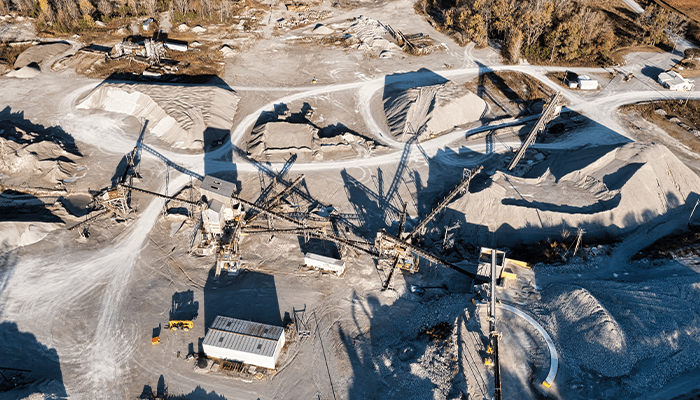
Potential Pitfalls of an OSHA Investigation
Employers often fail to understand that actions and inaction taken during an OSHA investigation can often have long term effects, including civil litigation. Generally, OSHA investigations occur as a result of a fatality of an employee, contractor employee and/or multiple injuries resulting in overnight hospitalization. In some cases, OSHA investigations are the result of an employee complaint; by a current or former employee that could be potentially disgruntled due to the circumstances of their departure. OSHA does acknowledge that former employees filing complaints may be disgruntled and may or may not do an on-site investigation. OSHA may provide employers their Non-Mandatory Investigative Tool. It is generally recommended to exercise caution when using this tool as employers may inadvertently provide information unrelated to the incident that could result in additional inquiries. Employers can use and submit investigations using their standard accident investigation forms and witness statements.
Catastrophic accidents should be handled by individuals with strong accident investigation skills and knowledge of civil and criminal processes due to the potential legal liability. Employers may be at risk of civil and criminal penalties, workers compensation claims, lawsuits from injured parties or lawsuits related to property damage. Employers often rely on the fact that workers compensation is considered the “exclusive remedy” in cases where their employee(s) are killed or injured as the result of a workplace incident. However, exclusive remedy protections do not always function as the impenetrable barrier to employer liability. The term implies each state has exceptions to the doctrine’s application and liability for the employee’s injuries may still fall on the employer by virtue of the contractual liabilities they have assumed to “action-over” lawsuits. As such, employers should not be overly reliant on exclusive remedy protections and must have a thorough understanding of the laws of the applicable state while also being cognizant of the contractual indemnification provisions of the MSAs they are executing.
It is critical that employers understand the importance of a proper accident investigation that includes preservation of evidence, preservation of evidence chain of custody, and witness statements and photo documentation of the scene from multiple angles and views. Many employers rely on investigations from law enforcement and state and federal agencies as the only source of documentation or accident investigation. In many cases, these agencies are only recording basic facts and do not perform root cause analysis.
It is the employer’s legal duty to gather and preserve critical evidence. What is considered critical evidence as the result of a fatality or catastrophe? Everything. Virtually everything can be considered critical evidence until it can be determined that it is not. Employers are often pressured to release the scene before it has been properly documented and evidence cataloged appropriately. Just because law enforcement or OSHA releases the scene, does not necessarily mean it should be released. Ensure that all evidence has been preserved through pictures, video and/or evidence preservation. DO NOT allow anyone, including OSHA, to remove evidence from a scene without approval of legal counsel. In some cases, if insurance is involved, counsel may be assigned but not readily available to participate in the release of evidence and advise on the documentation process. If in doubt, keep the scene preserved and controlled, even if that means hiring an outside firm to provide security to the scene.
In civil cases, that typically occur years after an incident, OSHA citations may be used against an employer as evidence of negligence. Workers compensation carriers appreciate non-admissions language too. Employers can be hesitant to involve specialized OSHA counsel due to the seemingly large, up-front cost but most employers do not have the knowledge or experience to request specific non-admissions language in any OSHA settlement. Generally, employers must request this specific language, OSHA does not automatically include it in settlement documents.
Common mistakes that are made during OSHA investigations and informal conferences include:
- Incorrect designation of management/non-management
- Allowing onsite management interviews
- Under-utilizing or over-utilizing drug tests
- Failing to properly document the scene
- Failing to properly document activities at the scene (i.e. removal of evidence)
- Allowing private parties to disturb the scene
- Not identifying all interested parties for evidence preservation purposes
- Failure to understand the employer’s ability to request fines and/or severity of citations be reduced based on information and facts obtained through the investigations
- Failure to understand that MSAs do not provide protection during an OSHA investigation. OSHA will often investigate all employers on site regardless
As an employer, it is critical to understand the complex nature of OSHA investigations, exemptions for reporting and how they apply to an investigation and actions during an investigation could have detrimental long-term effects. Reviewing current OSHA training requirements, documenting employee training and understanding the exemption tables in 29 CFR 1904.5 can provide an employer with critical information when making decisions about OSHA recordables vs. reportable. Consulting with attorneys who specialize in OSHA investigations offers guidance and information that can deliver peace of mind in a time when you are questioning your every move.
For more information on protecting your energy company and preparing for an OSHA investigation, contact our team of energy professionals.
Featured News & Insights

The energy sector, which spans oil and gas, utilities, and renewable energy, is one of the most complex and volatile industries in the world. From environmental scrutiny to fluctuating commodity...

On April 18, 2024, the Mine Safety and Health Administration (MSHA) issued a final rule to lower miners' exposure to respirable crystalline silica and enhance respiratory protection measures across...

The recent storms that battered Florida served as a stark reminder of the vulnerabilities that come with alternative energy infrastructure, particularly solar and wind. As the transition to...